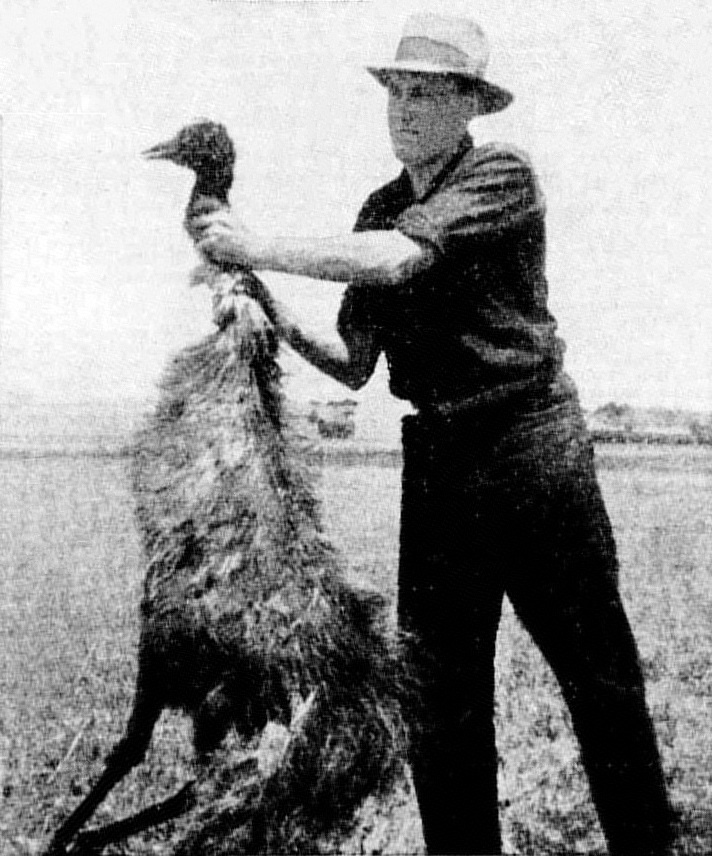In the scorching heat of Western Australia in 1932, one of history’s most peculiar military operations unfolded. Australian soldiers, armed with Lewis guns and 10,000 rounds of ammunition, found themselves facing off against an unexpected enemy – thousands of emus. These large flightless birds had descended upon the farmlands, threatening the already struggling wheat crops of World War I veterans turned farmers.

Image credit: Wikipedia – Emu War
The situation reached such dire proportions that the military deployed Major G.P.W. Meredith of the Seventh Heavy Battery of the Royal Australian Artillery to lead the campaign. Along with his small team, Meredith confidently marched into battle, expecting a swift victory against their feathered adversaries. However, these warriors soon discovered that emus were far more resilient and tactically advanced than anyone had anticipated.

Image credit: Australian Geographic
What made these birds such formidable opponents? Standing up to 6.2 feet tall and weighing up to 130 pounds, emus possessed natural advantages that proved superior to military strategy. The birds moved in small, unpredictable groups, making them difficult to target. Even when the soldiers managed to hit their marks, the thick feathers of these remarkable creatures seemed to deflect bullets with surprising effectiveness.

Image credit: Science ABC
The military’s initial strategy of setting up stationary machine gun positions proved embarrassingly ineffective. Emus simply scattered into smaller groups, refusing to bunch up in convenient targets. When soldiers attempted to mount guns on trucks to chase the birds, the rough terrain caused the vehicles to bounce wildly, making accurate shooting impossible. Meanwhile, the emus continued their destructive march through the farmlands.
After several failed attempts and thousands of wasted rounds of ammunition, the military withdrew in defeat. The official report revealed that only a small number of the estimated 20,000 emus were eliminated. Major Meredith, perhaps trying to salvage some dignity, famously remarked that his adversaries could withstand multiple bullets and showed tactical awareness worthy of trained soldiers.
The Great Emu War’s legacy extends beyond its humorous surface. It represents one of the earliest documented large-scale conflicts between human development and wildlife in Australia. Today, wildlife management experts study this unusual campaign as an example of how not to handle human-wildlife conflicts. Modern approaches focus on sustainable solutions rather than military intervention, though farmers still grapple with protecting their crops from native wildlife.
References:
Emu War – Wikipedia – link
Australia’s Emu Wars – Australian Geographic – link
The Emu War – Science ABC – link
Categories: Australian History, Do you know, Historical Events, Military History, Wildlife
Tags: Agricultural History, Australian History, Emu War, Environmental Conflict, Military History, Unusual Wars, Wildlife
Religion: None
Country of Origin: Australia
Topic: Historical Events
Ethnicity: None

